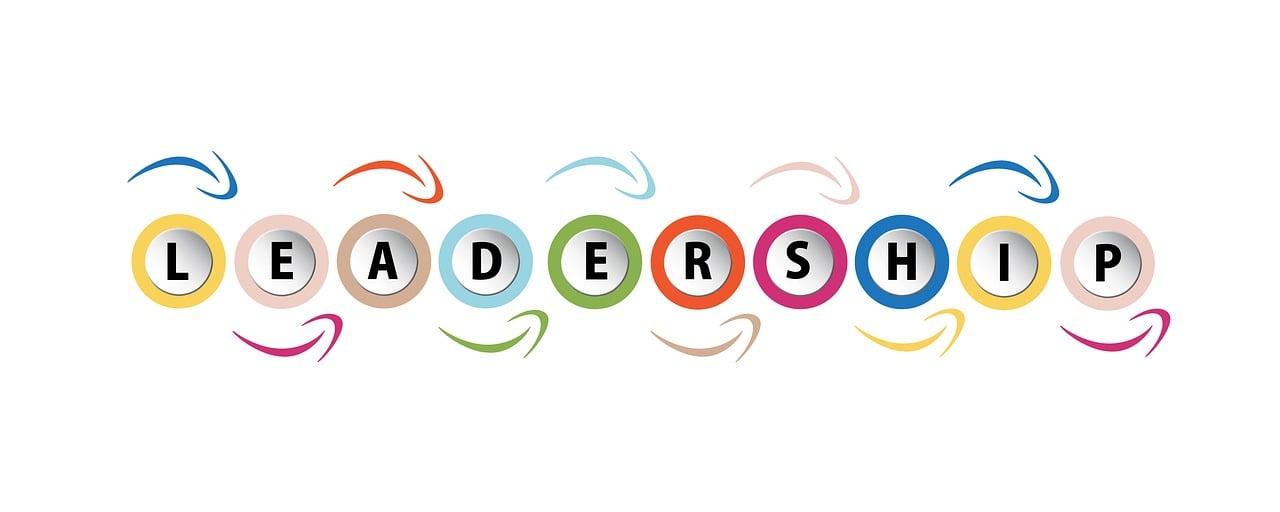10 Reasons Why Diverse Executive Leadership Fuels Business Success
The landscape of leadership is undergoing a paradigm shift, and with it comes the undeniable recognition of the immense benefits associated with diverse executive leadership. Moving beyond monolithic boardrooms and embracing a broader spectrum of perspectives, experiences, and backgrounds is no longer simply a question of ethics – it’s a strategic decision with demonstrably positive outcomes for organizations across all industries. Here are 10 compelling reasons why prioritizing diversity in your executive team can unlock significant advantages:
1. Enhanced Innovation
Imagine a brainstorming session where everyone agrees, nods their heads, and reinforces the same limited perspective. Sounds unproductive, right? This is the pitfall of homogenous teams: echo chambers where innovative ideas struggle to blossom. Conversely, a diverse executive team functions like a symphony orchestra, where each instrument (individual) contributes a unique melody, harmonizing to create a masterpiece of innovation.
Studies by McKinsey & Company show that companies with greater diversity in their leadership teams outperform their less diverse counterparts by a staggering 35% in terms of profitability. This isn’t just a coincidence; it’s the power of diverse perspectives challenging assumptions, sparking creativity, and leading to groundbreaking solutions that can propel your company ahead of the competition.
2. Improved Decision-Making
Groupthink, the enemy of sound decision-making, thrives in homogeneous environments. Shared assumptions and unchecked biases can lead to costly mistakes. With diverse leadership, this risk plummets. Different backgrounds, experiences, and viewpoints create a dynamic where challenges are encouraged, critical thinking takes center stage, and blind spots are illuminated.
A Harvard Business Review study reveals that diverse teams are 87% better at identifying and understanding risks. This translates to more informed decisions, fewer costly errors, and a stronger foundation for sustainable growth. By embracing diverse perspectives, you equip your leadership team with the tools to navigate complex situations and make choices that propel your company towards success.
3. Stronger Talent Acquisition & Retention
In today’s competitive talent market, attracting and retaining top performers is crucial. A diverse leadership team acts as a powerful magnet, sending a clear message of inclusivity and opportunity. By demonstrating your commitment to fostering a diverse and equitable work environment, you tap into a broader talent pool, attracting exceptional individuals from diverse backgrounds who see themselves reflected in your leadership and are eager to contribute their unique skills and perspectives.
One of the studies by Glassdoor found that companies with diverse leadership teams are 76% more likely to attract new talent. This talent magnet translates to a more dynamic and engaged workforce, where individuals feel valued, respected, and empowered to bring their best selves to the table. This, in turn, fuels higher productivity, innovation, and reduced turnover, propelling your company towards long-term success.
4. Improved Company Performance
When employees see themselves reflected in leadership, a powerful shift occurs. They feel valued, respected, and more connected to the company’s mission. This increased engagement isn’t just a feel-good metric; it translates to tangible business benefits. A study by Deloitte revealed that companies with inclusive cultures have 6 times higher employee engagement, leading to a 21% increase in profitability.
Engaged employees are not just productive; they are passionate advocates for your company. They go the extra mile, readily contribute their ideas, and become champions of your brand. By considering the possibility to recruit female c-level executives online and creating a team that reflects the diversity of your workforce, you create an environment where everyone feels valued and heard, unlocking the full potential of your human capital and driving your company towards long-term success.
5. Enhanced Brand Reputation
Consumers are no longer passive bystanders; they are actively making choices based on their values. In today’s socially conscious world, diversity and inclusion are no longer buzzwords; they are essential elements of a successful brand identity. A diverse leadership team aligns your company with these values, showcasing your commitment to building a fairer, more equitable world. This resonates with consumers who are increasingly choosing brands that reflect their own values.
A study by Cone Communications found that 76% of global consumers would purchase from brands committed to diversity and inclusion. This translates to increased brand loyalty, positive word-of-mouth marketing, and ultimately, a stronger market position. By embracing diversity in your leadership, you tap into a powerful consumer segment and build a brand that resonates with the values of today’s conscious consumer.
6. Broader Market Understanding
In a globalized world, understanding diverse markets is no longer a luxury; it’s a necessity. A diverse leadership team brings invaluable insights into different customer segments and their unique needs, preferences, and cultural nuances. These diverse perspectives help companies tailor their offerings and strategies to resonate better with a wider audience, expanding their reach and market share.
A study by BCG found that companies with diverse leadership teams are 19% more likely to outperform their competitors in terms of revenue growth. This stems from their ability to anticipate market trends, develop niche products that cater to specific segments, and navigate the complexities of a globalized marketplace. By embracing diversity in your leadership, you gain a deeper understanding of your target audience and unlock opportunities for growth in previously untapped markets.
7. Improved Risk Management
Experience is a valuable teacher, and diverse backgrounds offer a wealth of lessons learned. A diverse leadership team benefits from a tapestry of experiences in navigating challenges, overcoming obstacles, and mitigating risks. This collective wisdom strengthens a company’s ability to anticipate potential risks, develop contingency plans, and react swiftly and effectively to unforeseen circumstances.
Companies with diverse leadership teams are likely to be resilient in the face of crisis. This resilience translates to stronger business continuity, reduced financial losses, and a more sustainable future for your company. By embracing diversity in your leadership, you build a team equipped to navigate uncertainty and emerge stronger from challenging situations.
8. Access to New Funding Opportunities
The investment landscape is evolving, and investors are increasingly prioritizing companies that align with their values. A diverse leadership team demonstrates your commitment to social responsibility and environmental sustainability, which resonates with investors seeking to make positive impacts alongside financial returns. This opens doors to new funding opportunities and partnerships that can fuel your company’s growth and development.
Undeniably, a study by the Knight Foundation found that investments in companies with diverse leadership teams have outperformed the S&P 500 by a staggering 21%. This translates to increased access to capital, lower interest rates, and a stronger financial foundation for your company. By embracing diversity in your leadership, you align yourself with values-driven investors who share your vision for a more equitable and sustainable future.
9. Stronger Corporate Governance
Diversity fosters a culture of openness and transparency. With a diverse leadership team, different perspectives are valued, dissenting voices are heard, and ethical considerations are prioritized. This leads to more responsible decision-making, stronger corporate governance, and a commitment to operating with integrity.
Companies with diverse leadership teams are more likely to have ethical codes of conduct and likely to have diversity and inclusion programs. This translates to increased stakeholder trust, reduced legal risks, and a more sustainable long-term future for your company. By embracing diversity in your leadership, you build a foundation for ethical conduct and responsible governance, ensuring the long-term success and sustainability of your organization.
10. Sustainable Competitive Advantage
In today’s rapidly evolving world, adaptability is key to survival. A diverse leadership team is inherently more adaptable. Different perspectives offer a wider range of solutions, fostering a culture of innovation and continuous learning. This allows companies to anticipate and respond to changing market trends, navigate complex challenges, and stay ahead of the competition.
Why it matters: A study by McKinsey & Company found that companies with the highest levels of diversity outperform their peers by 36% in terms of profitability. This translates to a sustainable competitive advantage in a dynamic marketplace. By embracing diversity in your leadership, you equip your company with the agility and adaptability needed to thrive in a constantly changing world.
One crucial aspect of diversity is ensuring equitable representation of female executives in leadership positions. Fortunately, online platforms like Female Executive Search facilitate the discovery and recruitment of highly qualified female C-level talent, enabling companies to leverage their potential and contribute to a more balanced and successful business landscape.
Final Thoughts
By embracing diversity at the executive level, companies can tap into a wealth of untapped potential, foster innovation, and build a more resilient and successful future. It’s not just about doing the right thing, it’s about making the smart business decision.
About Female Executive Search
Launched in 2001 by Patrick Mataix, an international successful entrepreneur, CEO Worldwide has earned a reputation for its capability to source, match and select the best C-level executives for urgent requirements – interim or permanent – with a strong expertise in cross-border placements.
In 2018, CEO Worldwide has created a platform dedicated to female leaders – www.female-executive-search.com – to promote executive gender balance at top management level and boards.
Today, CEO Worldwide and Female Executive Search have vetted more than 25,000 international executives covering 180 countries.


















